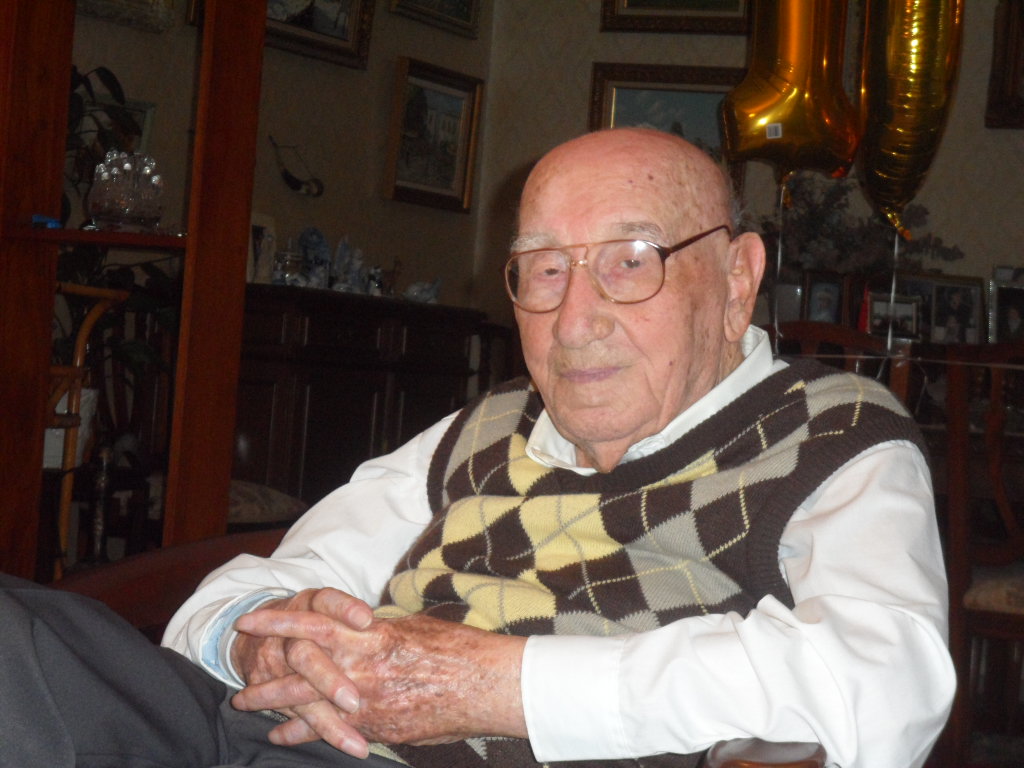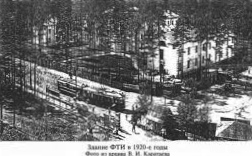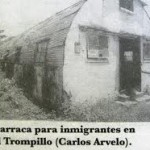Celebrating the long life of Danil Toradse
Danil Toradse is a Georgian-Venezuelan physicist, born on December 29, 1914, in Tbilisi, Georgia, then part of the Russian Tsarist Empire, and, today, the independent Republic of Georgia. One hundred years later, we are all rejoiced by the fact that he is still with us and in very good health. Happily, in these past few days we have been celebrating his 100th birthday. The main purpose of this article is to serve as a showcase to display online the pictures and videos taken during Danil Toradse’s birthday festivities. Last year, on occasion of his 99th birthday, I wrote a lengthy essay (in Spanish) about his life. Here, following a slideshow and a video, there is a condensed summary in English of that piece of work.
Intellectual emigration to and from Venezuela
In the second half of the 20th century, roughly, between 1938 and 1978, a few thousand foreign scientists, medical doctors, engineers and philosophers immigrated to Venezuela. In great part, they were instrumental in the forging of a scientific culture in this country, and were mainly responsible for building many Venezuelan scientific and technological institutions, and for teaching thousands of young Venezuelan students who were later to become scientists, doctors, educators and engineers.
In an unfortunate turn around of geopolitical events, nowadays, many of these Venezuelan trained STEM professionals (Science, Technology, Engineering, and Mathematics) have emigrated and are now working overseas and quite a few of them have met with uncommon success, as I recently explained in the article, Exporting talent: VES Project and the STEM emigration from Venezuela.
Danil Toradse was one among the many immigrants who chose to come to Venezuela to create for himself a new life far away from a European continent devastated by the war. In 1950, Danil Toradse, from Austria, immigrated to Venezuela, and soon joined the Central University of Venezuela faculty as a Teaching Assistant (Auxiliar Docente). In 1952, he was promoted to Assistant Professor of Physics and, in 1964, he was awarded a university professorship (Profesor Titular) at the Faculty of Science.

Seated left to right, we see Nicolás Szczerban (Ucranian), Jerzy Gintel (Polish), Spanish physicists, Eduardo Gil Santiago, and Salvador Velayos, Argentinian physicist, and the Director of the School of Physics and Mathematics, Manuel Bemporad, photographer Carlos Herrera and founder of the Scientific Photography Lab, and an unrecognized person. In the second row (counting from left to right), the fourth person standing is Professor Danil Toradse, and next to him, on his right, is Spanish (from Galdar, Canary Island) professor Nicolás Molina. (Photo taken from Carlos Herrera’s archive, ca. 1959).
After 28 years of service, in 1978, Professor Toradse finally retired. From 1950 to 1958, Professor Toradse was associated with the School of Physics and Mathematics of the Faculty of Engineering. But, in March, 1958, when the university created the Faculty of Science, he moved with the School of Physics and Mathematics to this newly created faculty. However, a few years later, when the Faculty of Engineering created the Department of Applied Physics (circa 1968-69), he transferred to this newly created department of which he was chairman for some number of years until his retirement in 1978. After his retirement, on a part time basis, he continued teaching physics for a few years at the Metropolitan University (UNIMET).
In order to commemorate his 100th birthday, the Central University of Venezuela issued a diploma signed by the university Rector and the Deans of the Faculties of Science and Engineering.
Happy 100 !

Professor Toradse receiving his diploma. To his left, Dr. José Manuel Martínez (his former student at the Faculty of Engineering and a Professor –now retired– of Computer Science) and, to his right, José Álvarez-Cornett, Physics Alumni Representative in the School of Physics Council and Principal Researcher of VES Project.
High Resolution HD Video
Low Resolution video
The Life of Professor Danil Toradse
What was Danil Toradse doing in Austria? To answer this question we have to go back to Tbilisi, Georgia, the city where he was born in 1914.
Danil Toradse was born into a family who owned properties in Tbilisi. They had an estate with a small forest crossed by a river whose waters were used to power a waterwheel to mill wheat. After primary education, Danil Toradse, with Georgia now being part of the communist Soviet Union, was sent to a technical textile school from which he graduated in 1932. After graduation, according to regulations, the young Danil, then 18 years old, had to join the textile industry as a worker, but he only wanted to continue studying. Here, his older brother came out to help him. Although his brother was not a member of the Communist Party, he was a local influence because he was the chief of finance of a Georgian ministry. Thus he was able to get a medical certificate stating that Danil Toradse suffered from some pulmonary disease and that was unfit for textile factory work.
In lieu of textile work, Danil Toradse was sent to Azerbaijan to study at a textile institute. We must bear in mind that Georgia, between 1922 and 1936, did not exist as an independent entity within the Soviet Union but instead was part of a federation of three regions: Armenia, Georgia and Azerbaijan– called the Transcaucasian Socialist Federative Soviet Republic. However, few weeks later, this textile institute where he was sent to had to close its doors and, in 1933, Danil Toradse found himself back in Tblisi.
He now wanted to study Mathematics. He took the admission exam to enter the Faculty of Physics and Mathematics of Tbilisi State University (TSU). Professor Toradse recalls that he did well in both, the physics and mathematics tests, but, since he did slightly better in the physics exam, the Dean of the School, the world famous Georgian mathematician, Niko I. Muskhelishvili (1891-1976), an specialist in theoretical mechanics, theory of elasticity, singular integral equations, and boundary value problems for analytic functions, recommended that, because of Toradse’s tests results, and the fact that Georgia needed more physicists than mathematicians, Danil Toradse was to be admitted to study Physics and not Mathematics.
At first, Danil Toradse was quite disappointed with Muskhelishvili’s decision. An official decision, he reluctantly had to accept it. The class sections for each group, one for physics students and the other for would-be mathematicians, –Toradse remembers– were about 40 students in each section. It happened, however, that soon young Danil Toradse was in love with physics, and today he says that he holds no regrets for having studied this scientific discipline.
In 1938, Danil Toradse graduated with honors and was admitted to the Aspirantura for the Doctor Candidate or Candidate of Science degree (Kandidat nauk). The Aspirantura is a postgraduate study period leading to the Candidate of Science Degree, which is equivalent to a Ph.D degree. The degree was first introduced in the USSR on January 13, 1934; for further details about the Soviet Aspirantura, the curious reader can refer to Nicholas DeWitt, Education and Professional Employment in the U.S.S.R.); Muskhelishvili and Illia Vekua (1907-1977) were members of the jury for the Aspirantura examination. The reader interested in knowing a little more about the times when Toradse was a student at TSU can read a biography of Nikoloz Vekua (1913-1993) who entered the Faculty of Mathematical Physics in 1932 and graduated in 1937 (a year before Toradse).
For his Aspirantura degree, between 1938 and 1941, Toradse worked in experimental physics under the direction of Russian physics professor Nikolai Nikolaevich Kalabukov (see photograph of name, written by Danil Toradse).
In 1941, at the recommendation of Professor Kalabukov, Toradse was accepted for a three-month training in Leningrad. “Where Frenkel worked”, Professor Toradse added. Now, I think that undoubtedly, Prof. Toradse must be referring to the Physical Technical Institute in Leningrad where famous Russian physicist Yakov Frenkel (1894-1952) worked from 1921 until his death in 1952 (today, this institute is called the Ioffe Physical Technical Institute).
On June 22, 1941, during Operation Barbarossa, Germany invaded the USSR. Professor Toradse remembers that, before the start of the war, while he was in college, one day a week was devoted to military training. So, when the war started, and he was called into service, he joined the Red Army with the rank of lieutenant (he used the German word, Oberleutnant). Professor Toradse recounts that he was attached to an artillery division headquartered in the city of Gori.
Now, the history of the Red Army during the Great War indicates that Georgia was part of the Transcaucasus Military District, which, on June 22, 1941, was commanded by Lieutenant General Dmitry Timofeyevich Kozlov. This writer, while not being a military history expert, after reviewing the Soviet military history, thinks that the division to which Danil Toradse belonged to may have been the 392th Rifle Division which was established in Gori in August 1941. This division was composed of the infantry regiments 790, 802 and 805, and the artillery regiment 955. So, if Toradse belonged to the 392th Rifle Division, then he could have been part of the artillery regiment 955.
Battle of the Caucasus and Toradse as a POW
The great Battle of the Caucasus started with the Operation Edelweiss, a military operation, authorized by Hitler, on July 23, 1942, and ending November 18, 1942. Towards the end of the Battle of the Caucasus, near Mount Elbrus, a large dormant volcano with 5,642 meters of altitude, considered the highest point of Europe, and traditionally also regarded as the boundary between Europe and Asia, Danil Toradse fell as a prisoner of war (POW) – (a reference about the fate of Soviet POW is Stalin’s War Against His Own Troops. The Tragic Fate of Soviet Prisoners of War in German Captivity).

In the Battle of the Caucasus, the Russian commander, Semyon Budyonny had retreated his troops to the Caucasus mountains. The German strategy (gray arrows) was to go through a passage near Mount Elbrus (white arrow on the map) and advance (gray arrows) to the Georgian capital, Tbilisi. The German strategy was not successful and Tbilisi was never captured. This battle map was taken form a Russian TV documentary that was in Youtube but that is not longer available.

German concentration camps in Austria (Photo from Wikipedia).
Historical Note
“Between 22 June 1941 and the end of the war, roughly 5.7 million members of the Red Army fell into German hands. In January 1945, 930,000 were still in German camps. A million at most had been released, most of whom were so-called “volunteers” (Hilfswillige) for (often compulsory) auxiliary service in the Wehrmacht. Another 500,000, as estimated by the Army High Command, had either fled or been liberated. The remaining 3,300,000 (57.5 percent of the total) had perished.”
Christian Streit: Keine Kameraden: Die Wehrmacht und die Sowjetischen Kriegsgefangenen, 1941-1945, Bonn: Dietz (3. Aufl., 1. Aufl. 1978),ISBN 3-8012-5016-4a
Thus, after the commission interviewed him and accepted him to emigrate to Venezuela, in October 1950, from Salsburg Danil Toradse sailed to Venezuela and arrived by boat to the coastal city of Puerto Cabello, and, like many other immigrants refugees, he was sent to the Immigrant Reception Center, located in El Trompillo, Güigüe, Carabobo State.
- Picture of a barracks at El Trompillo
- Drawing of a barracks, at El Trompillo Immigration Center, by the Czech-Venezuelan artist Carlos Stöhr who, as boy with his immigrant parents, also lived there for a few months.
In 1954, as recorded in the Venezuelan Official Gazette of December 1, 1954, Danil Toradse obtained his Venezuelan nationality. A year later, in 1955, Danil Toradse, then an Assistant Professor of Physics, at Central University of Venezuela, met and married Irina Prociow, a Ukrainian immigrant girl, who, in 1947, with only 15 years of age, from Salzburg, Austria, came together with her parents to live in Venezuela.
This happily married couple had two daughters, the eldest Tamara, and younger Carolina, both of them currently living in the United States.
From El Trompillo, Danil Toradse travelled to Caracas, to the then being built university campus of the Central University of Venezuela, to look for work.

The campus of Central University of Venezuela (an extension of about 200 hectare) being developed in the early 1950s.
However, Toradse had a big problem, as he could not speak the Spanish language. He interviewed with medical doctor and Professor Francisco de Venanzi (a learned man who soon was to become Rector of the university) who advised Toradse to go to the Faculty of Engineering. There Toradse met other immigrants like the Russian applied mathematician and civil engineer, Anatol Zagustin (1906-1992), and Ucranian physicist Nicolas Szczerban (1910-1999) who helped him to settle in the Russian immigrant community of Altavista, in Catia, western area in Caracas, Venezuela and were instrumental (specially Zagustin) in helping him to secure a job at the university as a teaching assistant, this mainly because his lack of knowledge of the Spanish language prevented Danil Toradse from teaching lectures. And, the rest of the story has already been told above (more details in the Spanish essay).
In 1993, after a fifty-two years absence, Professor Toradse briefly returned to his beloved Tbilisi to visit his family there.

Prof. Toradse, holding a child on his lap, during his 1993 visit to Tbilisi. The woman siting to his left is Toradse’s aunt (Photo: Toradse family album).

A traditional Georgian banquet to celebrate Danil Toradse visit to Tbilisi (Photo: Toradse family album).
On the occasion of his 99th birthday, the Georgia Physical Society, and other Georgian organizations as well, sent him a congratulatory letter.
I am very happy to have met and known professor Danil Toradse and wish him a long healthy life.
Profesor Toradse, Gaumarjos ! (Long life!)
ABOUT THE AUTHOR:
José G. Álvarez Cornett (Twiter: @Chegoyo)
Member of COENER, the “Physics and Mathematics for Biomedical Consortium“, and the American Physical Society (APS). Alumni Representative before the School of Physics Council, Faculty of Science, Central University of Venezuela.
Bio Key Words: Servant Leadership, VES Project, Digital Content Curation, Large Groups Intervention
© Chegoyo 2015.
















Hardly can hold my tears;(((
Thank you for sharing this kind of amazing article about Mr. Danil..
I’m ashamed I haven’t heard of him until now and I’m sure 99% of Georgians either.
I’ll tell all my friends about him and I hope he’ll come back to Georgia and enjoy his life here.
Thanks once again,
With great regards
Shota Tsakashvili
One of the Georgians!